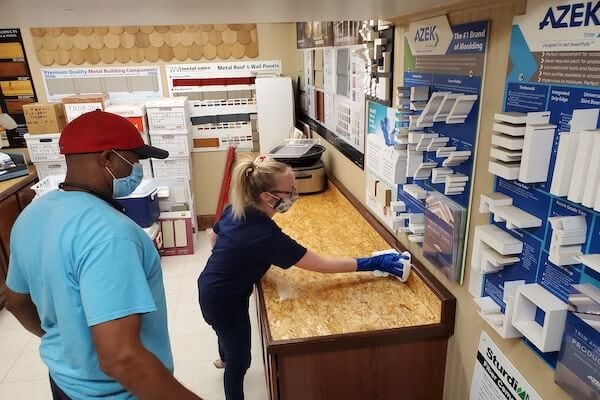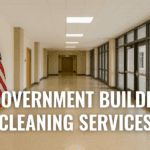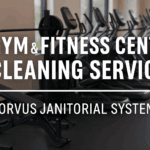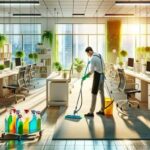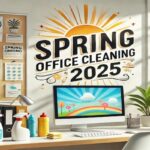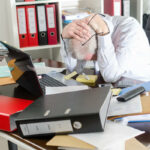Whether you’re getting ready to clean and disinfect your home or your office, using the proper tools and techniques is more important than ever. The following 10 cleaning and disinfecting tips will help you ensure that your efforts are safe and effective:
Clean then disinfect
Cleaning and disinfecting are two different processes. Cleaning removes dirt, germs, and impurities from the surface. This may sound like enough, but it’s important to note that cleaning only removes surface germs, it doesn’t kill them. Decreasing the number of germs on a surface helps decrease the spread of infection, but for effective risk containment, it’s important to kill the germs, too. That’s where disinfecting comes in. Disinfecting doesn’t necessarily clean dirty surfaces, but it does kill the germs left on the surface after you’re done cleaning. Both are important in reducing the spread of infection.
Use the right tools
For routine cleaning and disinfecting, the CDC recommends wearing reusable or disposable gloves, cleaning with soap and water first, and disinfecting next. Many people will skip the gloves or skip over cleaning to go straight to disinfecting. Each of these steps is an important piece of the puzzle. Using the right tools in the right order is critical.
Choose the right chemicals
The same way choosing the right tools and using them in the right order is important, choosing the right chemicals is important, too. In the past, it was easy to pick up whatever cleaning product was closest. This was generally acceptable when we weren’t cleaning and disinfecting with the coronavirus in mind. But now, it’s important to choose chemicals that effectively kill the virus that is driving the current pandemic. The label on your cleaning product will tell you whether or not it is effective for use against SARS-CoV-2 – the COVID-19 virus. You can also find a list of EPA-approved disinfectants here.
Check the expiration dates
If you’ve had household disinfectants sitting under your sink for years, be sure to check the expiration dates before you use them. Some products last for a while after their recommended “use by” date. But when it comes to reducing the risk of infection in your home or office, it’s better not to take any chances. Expired cleaning products and disinfectants should be replaced before use.
DIY disinfectant
If you can’t get to the store, you can create your own diluted household bleach solutions with non-expired ingredients. First, confirm that your bleach has a sodium hypochlorite concentration of 5 or 6%. Then, mix five tablespoons (or one-third of a cup) of bleach per every gallon of room temperature water in your bucket. You can then use this diluted bleach solution for up to 24 hours. After that, you’ll want to start the process over. If you don’t have unexpired household bleach, you can also use alcohol solutions – just confirm that they’re at least 70% alcohol first.
Follow the instructions on your cleaning products
Too often, it’s easy to get distracted while disinfecting. When you’re cleaning with soap and water, the dwell time is less important. But when you’re disinfecting, it’s important not to spray a disinfectant and wipe it off too quickly or leave it on for too long. Your cleaning product will tell you how long you should leave it on the surface before rinsing or wiping it away. Following the instructions on the label will ensure that you’re disinfecting safely and effectively. But before you move into your disinfecting phase, be sure to break out those gloves, wear other skin protectors if necessary, and ensure adequate ventilation.
Focus on high-touch surfaces
It’s easy to forget certain high-touch surfaces when we’re cleaning at home. After all, how often do you think about your computer keyboard or light switches? Viruses can live on these surfaces for several days, so it’s important to give them some attention. Other high-touch surfaces to give extra attention to:
• Tables
• Doorknobs
• Countertops
• Handles
• Phones
• Toilets
• Desks
• Faucets
• Sinks
• Showers
Wash your hands often
After you finish cleaning and remove your gloves, wash your hands. After you finish disinfecting, wash your hands. After using the bathroom, touching doorknobs, and before eating, wash your hands. Cleaning our homes and offices is important but it can’t distract us from keeping ourselves clean, too. Wash with soap and water often to reduce the spread of germs. Anytime you won’t have access to soap and water, carry hand sanitizer that is 60% alcohol or more.
Launder rags
If you’re using wipes to clean or disinfect, be sure to toss the old one and move onto a new one when you switch surfaces. If you’re looking to reduce waste, you can use rags instead, you just have to be a little more cautious. Use separate rags for separate rooms to avoid cross-contamination, watch for color changes that suggest it’s time to switch to a new one and wash them with hot water and detergent between uses.
Let Corvus Janitorial help
For highly effective commercial cleaning and disinfecting that follows CDC and EPA guidelines, call the experts at Corvus Janitorial. We offer a wide range of cleaning and disinfecting surfaces to help keep you, your clients, and your employees or coworkers safe and healthy. We offer after-hours services, increased frequencies, and high-level techniques. Contact us today for more information.


